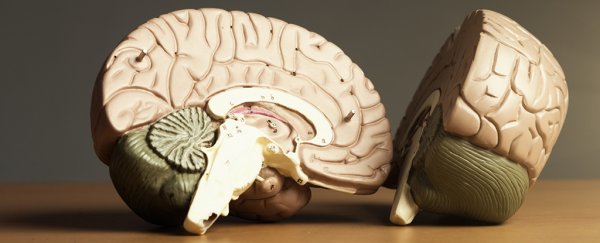As part of compiling the biggest ever map of the human brain under the influence of Alzheimer's, researchers have found more evidence that part of our brains might in fact be protecting themselves against the ravaging effects of the disease.
The team spotted that the cerebellum – that part of the brain responsible for movement and balance – undergoes significant but subtle change as a result of Alzheimer's disease, which could be a sign of the brain trying to put up defences.
This is important because the cerebellum, alongside regions such as the motor cortex and the sensory cortex, is suspected of not getting as worn down by the disease as other brain regions. But no one is really sure why.
In this study, the team found that the cerebellum goes through extra changes after Alzheimer's strikes that aren't reflected in the motor and sensory cortex.
In other words, appears something unique is happening in the cerebellum, and the scientists say this could help in the development of treatments that mimic this behaviour.
"The cerebellum, previously thought [to] be unaffected, displays a significant response at the molecular level," says lead researcher Richard Unwin, from the University of Manchester in the UK.
"Many of the changes here are not seen in other regions and this could imply that this region actively protects itself from disease. We won't know for sure until we carry out more research."
Obviously the cerebellum isn't unique in being altered by Alzheimer's, but it does change in a way that's different from other brain regions – especially the amyloid and tau protein build-up that characterises the disease in most other parts of the brain.
For now it's just a hypothesis, but the researchers think the 'little brain' of the cerebellum might have some survival mechanisms that the rest of the brain doesn't have.
For the study, the scientists looked at nine brains from people who had died with Alzheimer's and nine healthy brains from people who had died from other causes, including heart disease, lung disease, and cancer.
They were able to map 5,825 types of protein across six different brain regions, giving them 24,024 data points in all – and a treasure trove of information for researchers wanting to track the progress of Alzheimer's. The data is now available publicly online.
 (University of Manchester)
(University of Manchester)
"This database provides a huge opportunity for dementia researchers around the world to progress and to follow-up new areas of biology and develop new treatments," says Unwin.
"It could also help validate observations seen in in animal or cell disease models in humans. It's very exciting to be able to make these data public so scientists can access and use this vital information."
The research looked closely at the entorhinal cortex, cingulate gyrus, and hippocampus, where Alzheimer's is thought to start. We already know that these brain regions tend to take a battering from Alzheimer's.
It was in the other regions where the main surprise was found: the motor cortex and the sensory cortex remained largely untouched, as expected, but the cerebellum displayed a different pattern of protein changes that may be protective.
Sadly, Alzheimer's remains incurable, despite many recent advances in our understanding of it. In the last year researchers have identified a type of immunity to Alzheimer's found in certain people, as well as a potentially crucial link to gum disease.
All of this gets us closer to beating Alzheimer's, as do the 44 new protein changes identified by this latest study. The team was also able to highlight relatively early and relatively late changes in protein expression in damaged brains – again, useful knowledge for working on treatments in the future.
"We think that the changes we see in the regions affected later on-represent early disease changes, present before cells die," says Unwin. "These represent good new targets for drug developers, as we know it's important to try to intervene early."
The research has been published in Communications Biology.
